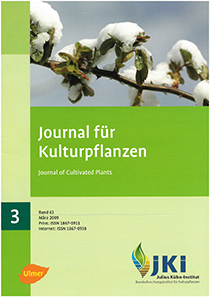Biology of the black rot pathogen, <em>Guignardia bidwellii</em>, its development in susceptible leaves of grapevine <em>Vitis vinifera</em>
DOI:
https://doi.org/10.5073/JfK.2009.03.02Keywords:
Cuticle isolation, electron microscopy, growth on vascular bundles, light microscopy, pseudothecia, spore types, staining methods, subcuticular hyphal netsAbstract
Since 2002 / 2003 black rot caused by Guignardia bidwellii is regularly occurring in organic viticulture in the wine growing areas at the Mosel and Nahe River and in the Middle Rhine valley in Germany. Though the disease originates from the USA and is known in Europe already for more than 100 years, the knowledge about the biology of its causal organism is still scanty. In the present study the life cycle of G. bidwellii is analysed with histological microscopical methods (bright field, phase contrast, fluorescence and electron microscopy). The development of the fungus on a susceptible grapevine variety (Riesling) is followed from spore germination up to the development of pycnidia and pseudothecia. The study is focused on the phase after penetration of the fungus which is characterized by subcuticular spread. The aim is to broaden the knowledge of the biology of G. bidwellii, to provide the basis for efficient control measures and to enable the histological characterization of varietal resistance.
Published
Issue
Section
License
The content of the journal is licensed under the Creative Commons Attribution 4.0 License. Any user is free to share and adapt (remix, transform, build upon) the content as long as the original publication is attributed (authors, title, year, journal, issue, pages).
The copyright of the published work remains with the authors. The authors grant the Journal of Cultivated Plants, the Julius Kühn-Institut and the OpenAgrar repository the non-exclusive right to distribute and exploit the work.







